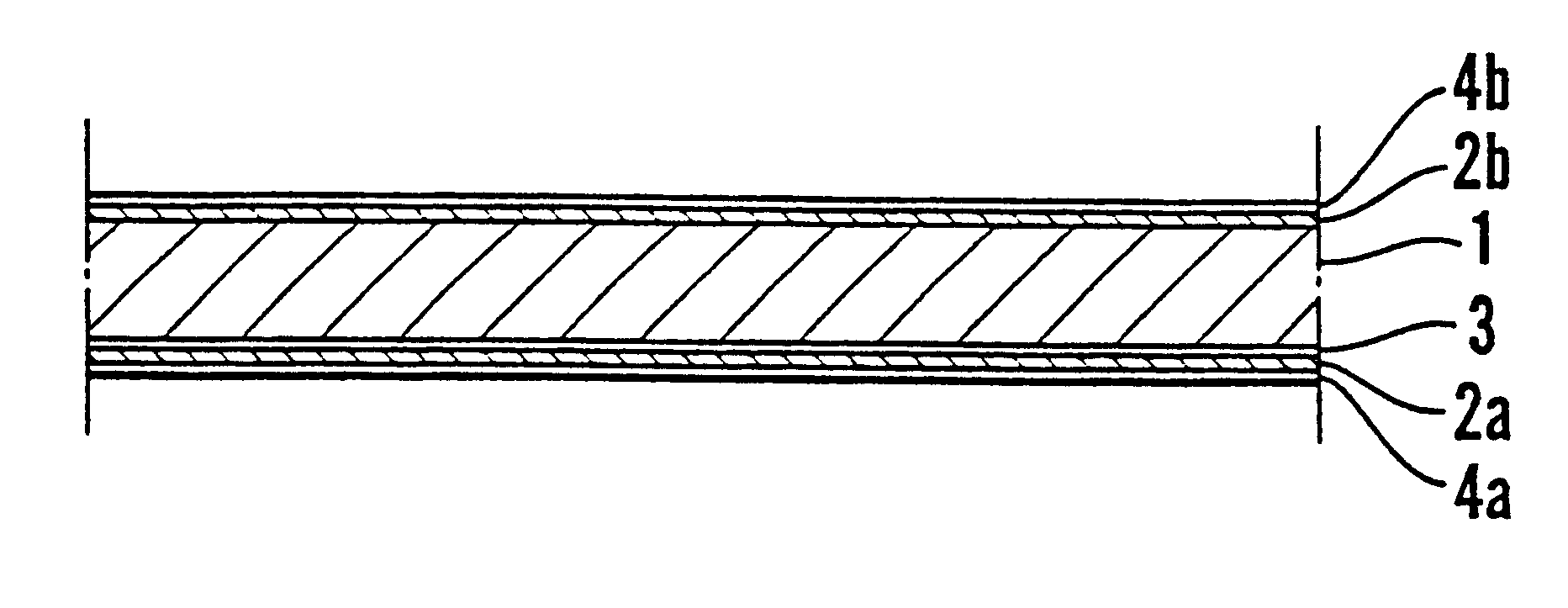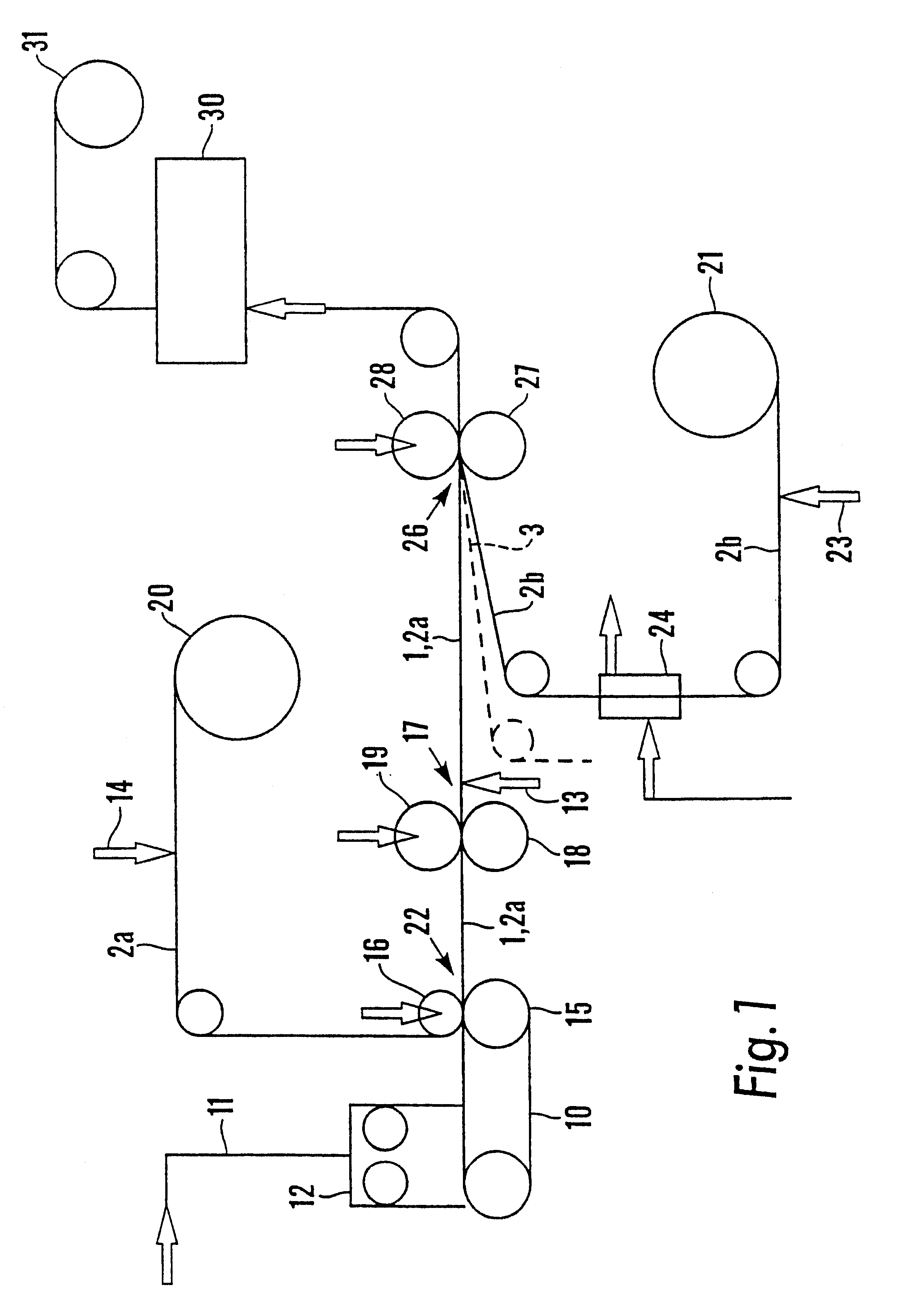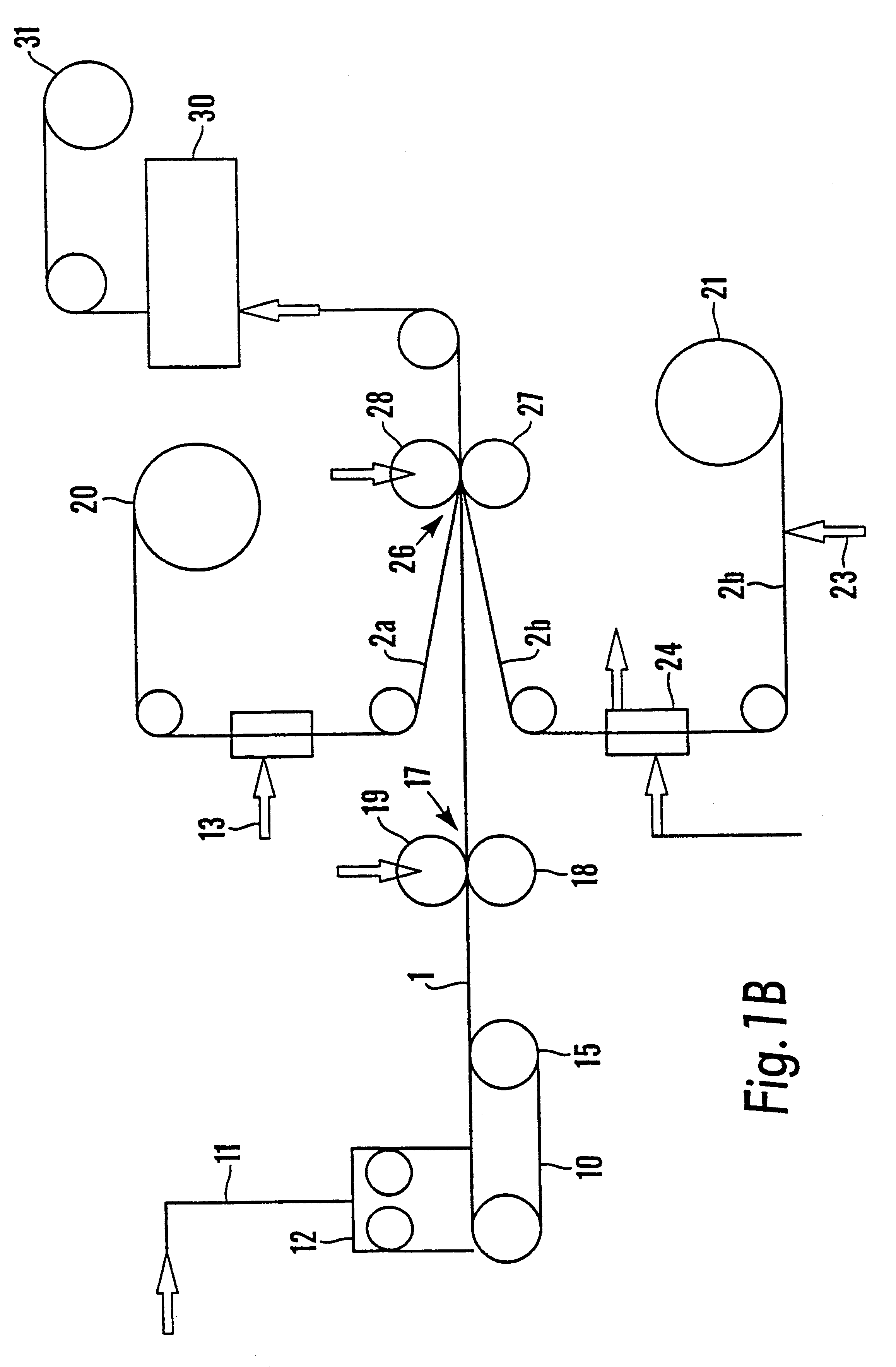Paper or paperboard laminate and method to produce such a laminate
a technology laminate, which is applied in the field of paper or paperboard laminate and the method to produce such a laminate, can solve the problems of relatively thin laminates, insufficient stiffness and strength of middle layers, and not meeting the maximum demands of packaging materials, etc., and achieves the effect of high tensile strength and greater density and tensile strength
- Summary
- Abstract
- Description
- Claims
- Application Information
AI Technical Summary
Benefits of technology
Problems solved by technology
Method used
Image
Examples
first embodiment
FIG. 1B shows in diagrammatic form a variant of the first embodiment according to FIG. 1,
FIG. 2 shows in diagrammatic form a pilot plant according to another conceivable embodiment for the manufacture of the laminate according to the invention,
FIG. 3 shows in diagrammatic form a laminate in cross-section according to a first conceivable embodiment according to the invention,
FIG. 4 shows in diagrammatic form a laminate in cross-section according to a second conceivable embodiment according to the invention,
FIG. 5 shows in diagrammatic form a laminate in cross-section according to a third conceivable embodiment according to the invention,
FIG. 6 shows in diagrammatic form a laminate in cross-section according to a fourth conceivable embodiment according to the invention,
FIG. 7 shows in diagrammatic form a laminate in cross-section according to a fifth conceivable embodiment according to the invention, and
FIG. 8 is an image made from a photograph of a scored part of a laminate according...
example 1
FIG. 3
The laminate L1 according to the embodiment consists of only two layers, namely a bulk layer 1 with the low density and high degree of freeness typical of the invention and a secondary layer 2. The secondary layer 2 consists typically of a paper layer but can in principle also be formed by a non-fibrous layer, e.g. a plastic film, of considerably greater density than the bulk layer 1 and also rolled and joined to the bulk layer 1 so that the consolidated laminate gains the characteristic attributes for the laminate according to the invention. The laminate L1 does not need to be an end product but is preferably an intermediate product.
example 2
FIG. 4
Starting out from the laminate L1, FIG. 3, a barrier layer 3 on the one hand, which lies adjacent to the bulk layer 1 and can be formed e.g. by an aluminium foil, and on the outside a pair of surface layers 4a and 4b, consisting of plastic film on the other hand, have been added in the laminate L2.
PUM
| Property | Measurement | Unit |
|---|---|---|
| density | aaaaa | aaaaa |
| density | aaaaa | aaaaa |
| density | aaaaa | aaaaa |
Abstract
Description
Claims
Application Information
 Login to View More
Login to View More - R&D
- Intellectual Property
- Life Sciences
- Materials
- Tech Scout
- Unparalleled Data Quality
- Higher Quality Content
- 60% Fewer Hallucinations
Browse by: Latest US Patents, China's latest patents, Technical Efficacy Thesaurus, Application Domain, Technology Topic, Popular Technical Reports.
© 2025 PatSnap. All rights reserved.Legal|Privacy policy|Modern Slavery Act Transparency Statement|Sitemap|About US| Contact US: help@patsnap.com



